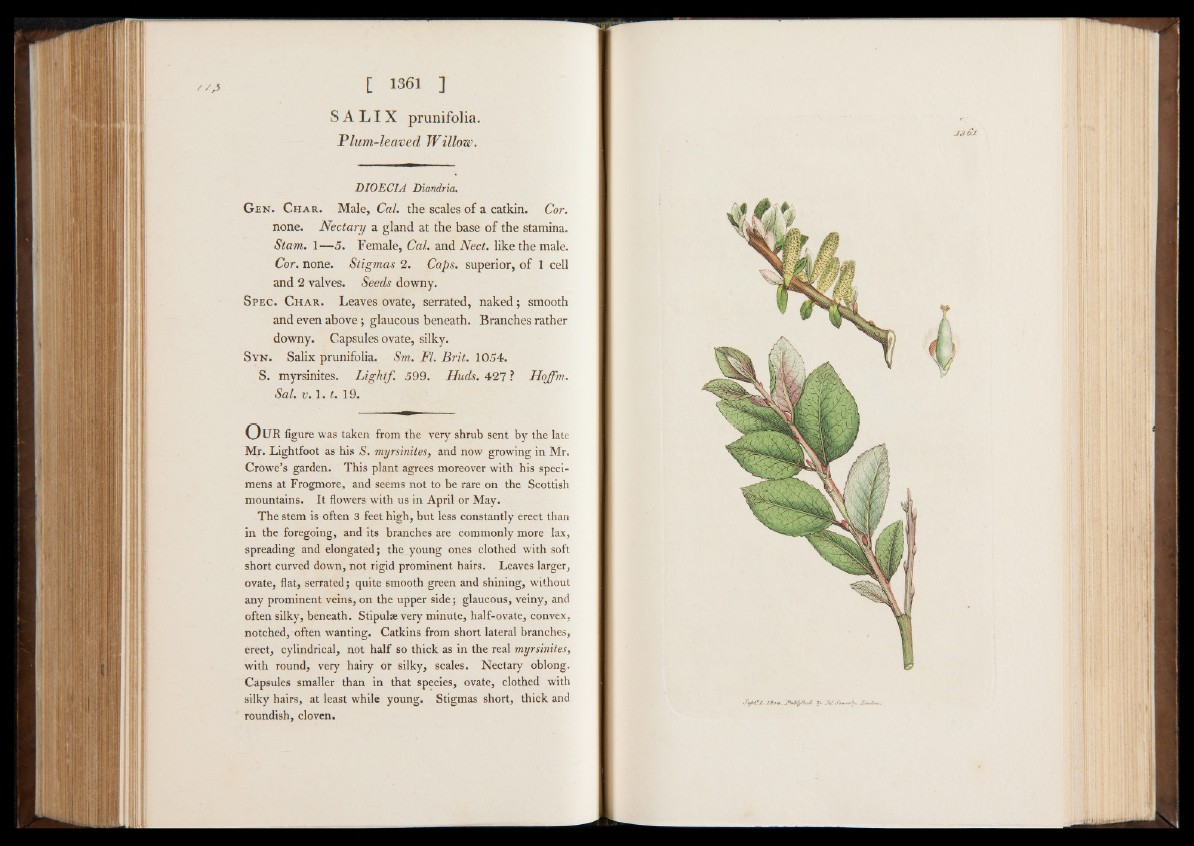
SALIX prunifolia.
Tlum-leaved Willow.
DIOEC1A Diandria.
Gen. Char. Male, Cal. the scales of a catkin. Cor.
none. Nectary a gland at the base of the stamina.
Stam. 1—5. Female, Cal. and Nect. like the male.
Cor. none. Stigmas 2 . Caps, superior, of 1 cell
and 2 valves. Seeds downy.
Spec. Char. Leaves ovate, serrated, naked; smooth
and even above; glaucous beneath. Branches rather
downy. Capsules ovate, silky.
Syn. Salix prunifolia. Sm. FI. Brit. 1054.
S. myrsinites. Lighlf. 599. Huds. 427 ? Hojpm.
Sal. v. 1. it. 19.
O u r figure was taken from the very shrub sent by the late
Mr. Lightfoot as his S. myrsinites, and now growing in Mr.
Crowe’s garden. This plant agrees moreover with his specimens
at Frogmore, and seems not to be rare on the Scottish
mountains. It flowers with us in April or May.
The stem is often 3 feet high, but less constantly erect than
in the foregoing, and its branches are commonly more lax,
spreading and elongated; the young ones clothed with soft
short curved down, not rigid prominent hairs. Leaves larger,
ovate, flat, serrated; quite smooth green and shining, without
any prominent veins, on the upper side; glaucous, veiny, and
often silky, beneath. Stipulae very minute, half-ovate, convex,
notched, often wanting. Catkins from short lateral branches,
erect, cylindrical, not half so thick as in the real myrsinites,
with round, very hairy or silky, scales. Nectary oblong.
Capsules smaller than in that species, ovate, clothed with
silky hairs, at least while young. Stigmas short, thick and
roundish, cloven.